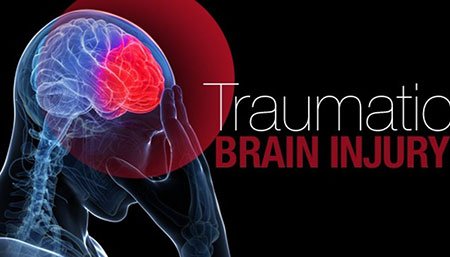Campus Dairy: Traumatic Brain Injury and Prevention[Learn with Steem]

Greetings! Steemians, During today's ward visit with my chief. I came encountered two distinct children age range from eight to fifteen years old. One had been unconscious since he fell from a tree and landed on his head, resulting in Diffuse axonal head injury in the context of TBI, while the other was a girl, 10 years old to be exact, who was hit by a car and hit her head on the ground as well, but she lost the ability to move her limb due to an incomplete lesion of the spinal cord at the level of C5 (from the X ray report). So I felt compelled to write about TBI in order to educate us about the need of always safeguarding our heads and avoiding any children who would try to harm his or her life.
In children and adolescents, traumatic brain injury (TBI) is the main cause of mortality and permanent impairment. Although cognitive and behavioral consequences have recently been recorded in children with all degrees of TBI severity, other areas of functioning (such as psychosocial adjustment) have been overlooked.

What is Traumatic Brain Injury
Traumatic Brain Injury (TBI) is a disruption in the normal operation of the brain that can be caused by a blow, bump or jolt to the head, the head abruptly and forcefully hitting an object or when an object pierces the skull and penetrates brain tissue.
Clinical signs of TBI:
- Loss of Consciousness
- Memory loss for events that occurred before or after the event (amnesia)
- Muscle weakness,
- visual loss
- speech changes
- Disorientation,
- Delayed thinking or difficulty concentrating.
- Dizziness
- Difficulty in Breathing
- Cognitive difficulties
- Body numbness or tingling sensation
- Loss of bladder control
TBI symptoms can range from minor to severe, depending on the amount of the brain damage.From the above case , one of the kids was unconscious while the other could not move her limbs.

Types of Injuries as a of Trauma to the brain:
TBIs can result in "mass lesions," which are areas of localized injury such as hematomas and contusions that raise brain pressure. The following are some of the numerous forms of TBI sequelae:
Hematoma is a blood clot within or on the surface of the brain. Hematomas can develop in any part of the brain. A blood clot between the dura mater (the brain's protective covering) and the inside of the skull is known as an epidural hematoma. A subdural hematoma is a blood clot that forms between the dura mater and the arachnoid layer, which lays directly on the brain's surface.
Cerebral contusion is brain tissue that has been bruised. Cerebral contusions are similar to bruises in other sections of the body when studied under a microscope. They are made up of wounded or enlarged brain tissue combined with blood from arteries, veins, or capillaries. Contusions are most frequent in the base of the front sections of the brain, but they can happen elsewhere.
Intracerebral hemorrhage (ICH) is a type of brain bleeding that can be caused by various types of brain traumas, such as contusions. The size and location of the hemorrhage play a role in determining whether it can be surgically removed.
Subarachnoid Hemorrhage: Bleeding into the subarachnoid space causes subarachnoid hemorrhage (SAH). After a TBI, it appears as diffuse blood scattered thinly over the surface of the brain. The majority of SAH cases linked to head trauma are minor. Severe traumatic SAH can lead to hydrocephalus.
Diffuse Axonal Injury: Axonal injury is defined as a decrease of axon function as a result of tear of the axons.
Ischemia, or a lack of blood supply to certain parts of the brain, is another type of diffuse injury. A considerable number of TBI patients may have a drop in blood supply to dangerously low levels. This is critical because a brain that has just suffered a traumatic injury is particularly sensitive to small changes in blood flow. Blood pressure fluctuations during the first few days following a head injury might also be harmful.

Treatment
- Surgery
Prevention of Head Injuries
- When driving or riding in a car, always use a seatbelt.
- Never drive while under the influence of drugs or alcohol
- Remove any risks in your home that could cause you to fall
- Inspect younger children.
- Allowing younger children to use sporting equipment or participate in sports that are inappropriate for their age is not a good idea.
- Obey all traffic signals and be mindful of other drivers.

In conclusion the important of safety can never be over emphasize, lets observe our young ones or children whenever they are playing to avoid the risk of injuries
Thanks for reading,
@stellaheart, Thanks for sharing with us on @campusconnect , Continue sharing your quality contents with us here we love and appreciate your effort ,Thank
REMARKS;